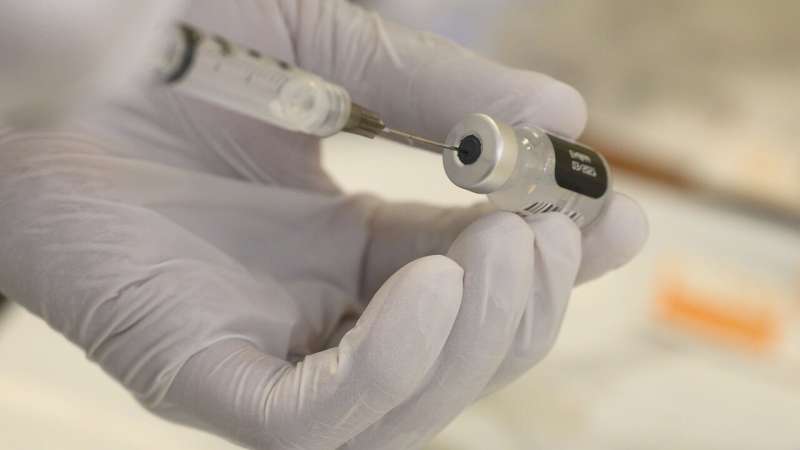October 2, 2023 report
This article has been reviewed according to Science X's editorial process and policies. Editors have highlighted the following attributes while ensuring the content's credibility:
fact-checked
peer-reviewed publication
trusted source
proofread
Post-vaccine vaginal bleeding rates associated with all COVID-19 vaccine types across reproductive ages

Research by the Norwegian Institute of Public Health, Norway, suggests that COVID-19 vaccines or the body's response to them can lead to unexpected vaginal bleeding in women. This phenomenon was observed in women across different reproductive stages.
In a paper, "Unexpected vaginal bleeding and COVID-19 vaccination in nonmenstruating women," published in Science Advances, the team of public health researchers detail their findings that raise the possibility that the spike protein of the SARS-CoV-2 virus, which is targeted by the vaccines, might be involved in this phenomenon.
The study investigated the association between COVID-19 vaccination and unexpected vaginal bleeding in non-menstruating postmenopausal, perimenopausal, and premenopausal women. The study included approximately 22,000 participants, aged 32 to 64, from the Norwegian Mother, Father and Child Cohort Study (MoBa) and the Senior cohort, ages 65 to 80.
Unexpected vaginal bleeding was reported in 3.3% of postmenopausal women, 14.1% of perimenopausal women, and 13.1% of premenopausal women, more than three times the expected rates. Around half of the women who reported unexpected vaginal bleeding experienced it within 28 days after a COVID-19 vaccination.
The study suggests that the vaccine type may influence the risk of vaginal bleeding. The Spikevax (Moderna) vaccine, which contains a higher mRNA dose, was associated with a higher risk of vaginal bleeding than Comirnaty (PFIZER), particularly in premenopausal women.
Despite the physiological changes associated with hormonal intrauterine devices (IUDs) in premenopausal women, there were no apparent differences in the relative risk of bleeding across hormone use in the IUD group, which accounted for 74% of non-menstruating premenopausal women in the study.
The lack of differentiation between prolonged hormonal contraceptives, age and menopausal-related hormonal differences suggests that the mechanism is not through disruptions of the hypothalamic-pituitary-ovarian axis. In a population data study, biological mechanisms cannot be directly interrogated, but the observations provide the insights needed for effective follow-up investigations.
One of the study's limitations is the robust nature of the data related to post-COVID-19 vaccination effects. With high levels of reporting post-vaccination, there is a tremendous opportunity to collect data on a globally shared mass vaccination event, potentially connecting symptoms to the vaccinations. It also allows for disparate, unconnected data to be associated with the vaccination event as it is uniquely robust in data collection compared to any other event and can create the illusion of, or bias towards, connections with vaccination.
Unexpected vaginal bleeding is likely under-reported in normal circumstances and is a chronically understudied aspect of women's health. Only 31% of women who reported bleeding sought medical care, and the proportion was even lower if the bleeding occurred post-vaccination.
Typical health-care-related databases would not have captured the current findings where medical care was not involved and would likely not have captured consultations where treatment was not offered to address the symptoms. It is unclear if similar events occur with other vaccines or medications, and it would be challenging to investigate within the data captured by current medical databases.
The current study bypassed the health care filter and collected reports directly from the women surveyed. Without this effort, the strong signals found in the reports and associations between specific vaccine types and the similarities across reproductive stages and hormone use would have been invisible. The results highlight the need for greater study, surveillance and reporting of health issues specific to women.
More information: Kristine Blix et al, Unexpected vaginal bleeding and COVID-19 vaccination in nonmenstruating women, Science Advances (2023). DOI: 10.1126/sciadv.adg1391
© 2023 Science X Network




















